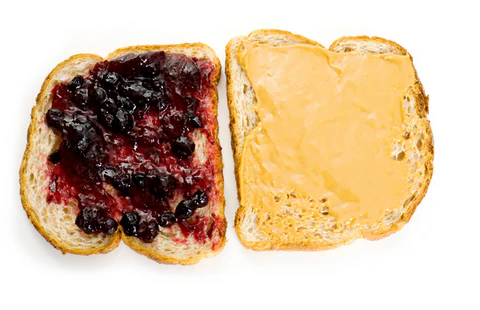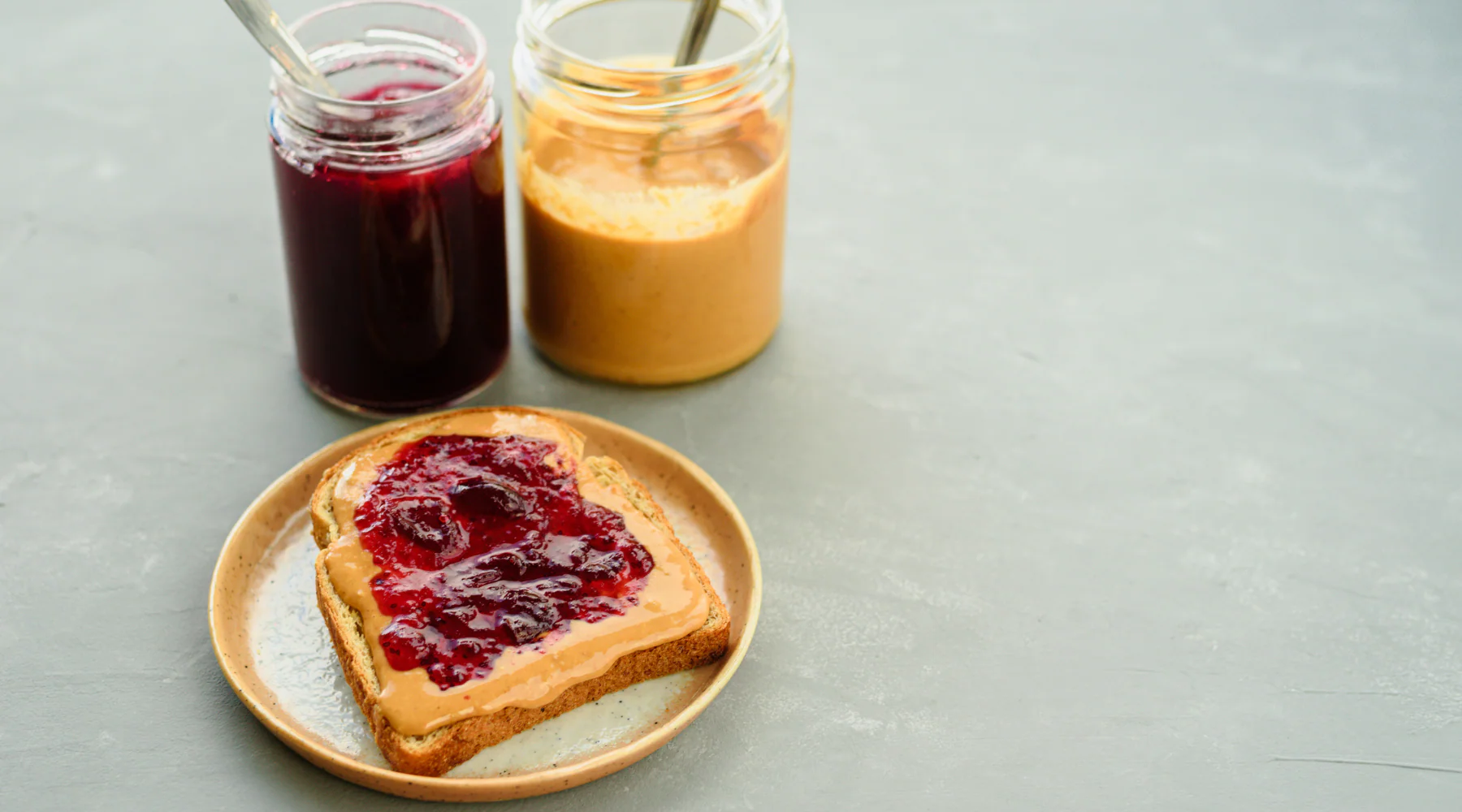Understanding the difference between peanut butter and jam requires examining their origins, ingredients, nutrition, texture, and culinary applications. Peanut butter is a legume-based spread derived from ground peanuts, while jam is a fruit preserve produced by cooking crushed fruit with sugar and pectin. Both are household staples, but their composition, health impact, and usage are fundamentally different.

Origins and History:
Peanut Butter:
-
Developed in the late 19th century as a protein-rich food.
-
Patented by Dr. John Harvey Kellogg in 1895.
-
Became popular in North America due to its long shelf life and nutritional density.
Jam:
-
Origins trace back to Middle Eastern fruit preservation methods.
-
Gained popularity in Europe during the Crusades when sugar became widely traded.
-
Standardized recipes emerged in the 17th century with pectin-rich fruit processing.
Ingredients and Production:
Peanut Butter Production:
-
Roasted peanuts (90% or more).
-
Stabilizers such as hydrogenated oils for texture.
-
Salt and sugar as optional additives.
-
Variants: smooth (finely milled) and crunchy (with peanut fragments).
Jam Production:
-
Crushed fruit pulp as the base.
-
Cane sugar for sweetness and preservation.
-
Pectin to bind fruit sugars and acids into a gel.
-
Cooked at 220°F before hot-filling into sterilized jars.
Key Differences: Peanut Butter vs. Jam:
| Feature | Peanut Butter | Jam |
|---|---|---|
| Main Ingredient | Ground peanuts | Fruit pulp + sugar + pectin |
| Nutritional Role | Protein + healthy fats | Natural sugars + carbohydrates |
| Texture | Thick, creamy, sometimes crunchy | Soft, gel-like, may contain fruit |
| Calories (100g) | ~550 kcal | ~250 kcal |
| Shelf Life (opened) | 2–3 months | 6–12 months (refrigerated) |
| Health Concerns | Allergens, added sugar in variants | High sugar, limited protein |
Nutritional Breakdown:
Peanut Butter Nutrition (per 100 g)
-
Protein: 25 g
-
Fat: 50 g (mostly unsaturated)
-
Carbohydrate: 20 g
-
Energy: 550 kcal
-
Micronutrients: Magnesium, vitamin E, niacin
Jam Nutrition (per 100 g)
-
Protein: <1 g
-
Fat: <0.5 g
-
Carbohydrate: 65 g (mostly sugar)
-
Energy: 250 kcal
-
Micronutrients: Vitamin C, antioxidants, anthocyanins
Culinary Applications:
Common Uses of Peanut Butter:
-
Spread on bread or crackers.
-
Ingredient in smoothies, cookies, and protein bars.
-
Base for Asian satay sauces.
-
Combined with honey or chocolate spreads.
Common Uses of Jam:
-
Spread on toast, muffins, and pancakes.
-
Filling for pastries, sponge cakes, and donuts.
-
Glaze for roasted meats.
-
Layering in cheesecakes or trifles.
Similarities Between Peanut Butter and Jam:
-
Both are spreads commonly paired with bread.
-
Both can be stored at room temperature before opening.
-
Both serve as high-energy foods.
-
Both have global commercial markets.
Differences That Matter:
-
Peanut butter supplies protein and satiety, jam provides sugar and quick energy.
-
Peanut butter is nut-derived, jam is fruit-derived.
-
Peanut butter is dense and savory, jam is light and sweet.
-
Peanut butter requires oil stabilization, jam requires pectin binding.
-
Peanut butter can cause allergic reactions, jam rarely does.
Shelf Life and Storage:
-
Peanut Butter: Stable for 6–9 months unopened. Once opened, natural types require refrigeration to prevent oil rancidity.
-
Jam: Unopened jars last up to 1 year. Opened jars need refrigeration to prevent mold and yeast growth.
5 Health Benefits of Peanut Butter:
-
Provides plant-based protein.
-
Contains heart-healthy fats.
-
Rich in vitamin E and magnesium.
-
Supports satiety and weight control.
-
Enhances energy density for athletes.
5 Health Considerations of Jam:
-
Provides antioxidants from fruits.
-
Supplies vitamin C.
-
Quick glucose source during physical activity.
-
Can be high in refined sugars.
-
Limited protein or fat content.
FAQs About Peanut Butter and Jam:
Q1: What is the biggest nutritional difference between peanut butter and jam?
Peanut butter supplies protein and fat, while jam provides sugar and carbohydrates.
Q2: Why is pectin important in jam?
Pectin enables the fruit pulp to solidify into a gel, giving jam its spreadable texture.
Q3: Can peanut butter and jam be eaten on special diets?
Yes. Peanut butter suits low-carb diets but not nut-allergy cases. Jam fits vegan diets but conflicts with keto due to sugar content.
Q4: Which has a longer shelf life, peanut butter or jam?
Jam often lasts longer when sealed because its high sugar concentration reduces water activity.
Q5: What is healthier in moderation, peanut butter or jam?
Peanut butter is more nutrient-dense because of its protein, healthy fats, and vitamins. Jam is higher in sugars with fewer micronutrients.
Learn More: How Far Is 20,000 Steps? Complete Distance, Time, and Health Guide
Coolant and Distilled Water: The Complete Automotive Guide
Conclusion:
The difference between peanut butter and jam is clear. Peanut butter is nut-based, nutrient-dense, and savory. Jam is fruit-based, sugar-rich, and sweet. Both occupy unique roles in nutrition and cuisine. Their combination in the classic PB&J sandwich balances macronutrients, flavors, and textures. Choosing between them depends on dietary needs, cultural preferences, and personal taste.

